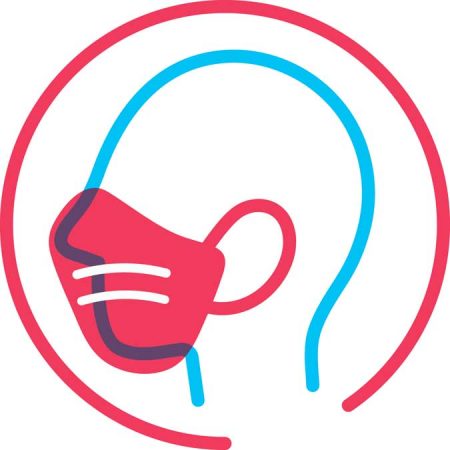St. Augustine once wrote: “Seek not to understand that you may believe, but believe that you may understand.” He was writing, obviously, about matters of faith. Unfortunately, many who’ve scolded the public to “follow the science!” over the past several months are now seemingly content to treat masks as an object of faith rather than trust the science behind it.
Take the now famous Danish mask study (Henning Bundgaard, et al.), published in The Annals of Internal Medicine, Nov. 18. 2020. One would think the study’s findings would encourage greater scrutiny on the efficacy of mandatory mask mandates, considering the absurd burden it places on individuals and businesses, not to mention the likely violation of civil liberties. Instead, many on the Left lost no time in single-mindedly smearing the study, attack its credibility, and nitpick on whatever semantic holes they pretend in finding.
And so it proved.
Not that The Annals was making it hard for the study to be attacked. Referrals, as well as the abstract, tended to make the findings appear as benign as possible for the pro-mask narrative: “Observational evidence suggests that mask wearing mitigates transmission of severe acute respiratory syndrome coronavirus 2 (SARS-CoV-2) and that the findings “should not be used to conclude that a recommendation for everyone to wear masks in the community would not be effective in reducing SARS-CoV-2 infections.”
Gratifyingly, the study itself says differently. In fact, the study itself would note that Danish authorities “did not recommend face mask use outside hospital settings.” Why is that?
Because the Danish health authorities themselves do “not recommend that healthy people who move around in public [to] generally wear face masks.” The only exceptions being hospital visits, commutes within risk areas, or when caring for COVID-19-infected family members.
The study was conducted on nearly 5,000 participants, of which half were asked to wear masks and the other half weren’t. Those who were asked to wear masks were given proper training and the masks given were of good quality. In the end, “1.8% got infected wearing masks, while 2.1% got infected not wearing masks.” Which is statistically insignificant. Thus, as the study itself points out: “a recommendation to wear a surgical mask when outside the home among others did not reduce, at conventional levels of statistical significance, incident SARS-CoV-2 infection compared with no mask recommendation.”
The foregoing should be taken in the context of study after study showing that masks in the public setting do tend to be ineffective. And a CDC Report of Sept. 11, 2020, which found that amongst those infected by COVID-19, 85% “always” or “often” wore masks, while 70% of those actually hospitalized for COVID-19 “always” wore masks.
What makes this insanity all the more frustrating is that centuries before and up to March 2020, the advice had nearly always been: “don’t wear masks.”
Yet, suddenly, mask proponents, imposed an about-face. It became “yes wear it publicly because it protects you.” Then it changed to: “no, actually it doesn’t protect you but it protects others.” The current manifestation seems to be: “well, wear it to raise awareness of COVID-19.”
The foregoing is bizarrely contradicted by CDC Director Robert Redfield’s Sept. 16 statement: A “face mask is more guaranteed to protect me against COVID than when I take a COVID vaccine.” Which in turn weirdly contradicted the CDC’s own Sept. 11 Report (particularly in an e-mail to Health Feedback), which stated that it “clearly stated that wearing a mask is intended to protect other people in case the mask wearer is infected. At no time has CDC guidance suggested that masks were intended to protect the wearers.”
Note that an Oct. 23 study (Dhaval Adjodah, et al), published on medRxiv, had to be retracted when it claimed that mask mandates resulted in reducing COVID-19 cases, only to find infections in the subject areas rose after the study was released.
Then, finally, there is this: a study (Shiyi Cao, et al) published Nov. 20, described “a city-wide SARS-CoV-2 nucleic acid screening program between May 14 and June 1, 2020 in Wuhan. xxx There were no positive tests amongst 1,174 close contacts of asymptomatic cases.” (Emphasis supplied).
In short, and if true: asymptomatic spread is not real. And if that is the case, with nearly 98-99% of COVID-19 cases being asymptomatic or mild, what could then justify mandatory mask wearing?
To reiterate a point made in a previous article: if the science on public mask wearing shows that such is useless or doesn’t work (in fact, the Danish mask study seems to indicate that masks may even increase the likelihood of infection) or at the very least uncertain, then for the government to make public mask wearing a mandatory requirement is arbitrary, capricious, and even perhaps despotic.
It is one thing to recommend that people wear masks. But to force people to wear masks under risks of penalty is simple government overreach.
Jemy Gatdula is a Senior Fellow of the Philippine Council for Foreign Relations and a Philippine Judicial Academy law lecturer for constitutional philosophy and jurisprudence.
Twitter @jemygatdula

